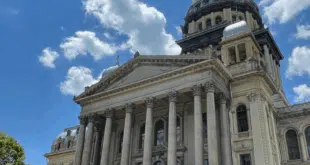By John Stewart
@DTPaymentNews
For years, pundits have said consumers trust banks more than any other entity when it comes to payments options, but that doesn’t mean financial institutions are always delivering the most innovative services. Now a review of mobile-banking and -payments offerings indicates even the nation’s biggest banks have a decidedly mixed record on that score.
For example, 89 out of the 100 largest financial institutions by assets offer a mobile bill-payment option, and all of the top 25 do. But just 36 of the top 100 let customers pay other persons with a mobile device, according to a report by First Annapolis Consulting released Monday.
Similarly, a mobile-app offering is just about “ubiquitous,” Jeff Crawford, a senior manager at Annapolis, Md.-based First Annapolis who worked on the report, tells Digital Transactions News. Some 94 of the top 100 offer this product. But certain features are likely to be missing. Just nine banks offer card controls, which allow cardholders to disable a lost or stolen card. Six let customers view their FICO risk score, and five allow them to open a new account. Even among the four largest banks, the corresponding numbers are two, three, and one. Meanwhile, just 35 of the top 100 have enabled Touch ID for access to their apps.
The nation’s biggest financial institutions stand at a crossroads, says Crawford. “They’ve gone beyond the first stage of mobile banking, of just doing the basics,” he notes. “The next stage we’re witnessing is account-management services, being able set up alerts, send money externally, move money around, being able to turn cards on and off.”
Support for mobile payments is part of this new wave, and here the 100 biggest banks have a stronger showing. Seventy-one support a mobile wallet, including 48 of the bottom 75. Among the three major third-party wallets, Apple Pay is the most widely supported, with 69 offering Apple Inc.’s payment service, 35 offering Samsung Electronics Co. Ltd.’s Samsung Pay, and 31 making Alphabet Inc.’s Android Pay available.
But Apple Pay’s clear lead may not be as solid as it appears, Crawford says. “Apple Pay came out first, and there was a frantic reaction” among the banks, he says, to sign up with the computing giant for fear of being left out. Two years later, he says, the payment service has fallen “a little bit further down on the priority list” as bank executives begin to question just how badly customers want a mobile-payments service.
“There’s a lot of healthy skepticism,” among these managers, Crawford says, leading them to believe they have time to act and room to maneuver. Indeed, he says some are looking at do-it-yourself models, inspired by examples such as JPMorgan Chase & Co.’s homegrown Chase Pay wallet.
The so-so backing of mobile person-to-person payments, though, strikes Crawford as odd, given the strong consumer uptake of competing non-bank offerings like PayPal Holdings Inc.’s Venmo. “It’s a little bit surprising that there isn’t more adoption of this” among the 100 largest banks, he says, though he adds that the rebranding next year of Early Warning Services LLC’s clearXchange P2P network as Zelle may help make the service more prominent. ClearXchange will connect a dozen U.S. banks with the expected addition of Citigroup Inc. next year. Also, the adoption rate among the top 100 has already risen from 24% in a similar survey in 2014.
Still, Crawford notes, P2P payments aren’t likely to appeal to banks as much as payment services on which they can earn interchange income. “We’re skeptical that P2P is the mobile-payment case that will spur mobile-payment adoption,” he says. “It’s important, but not as important as card-based offerings.”





